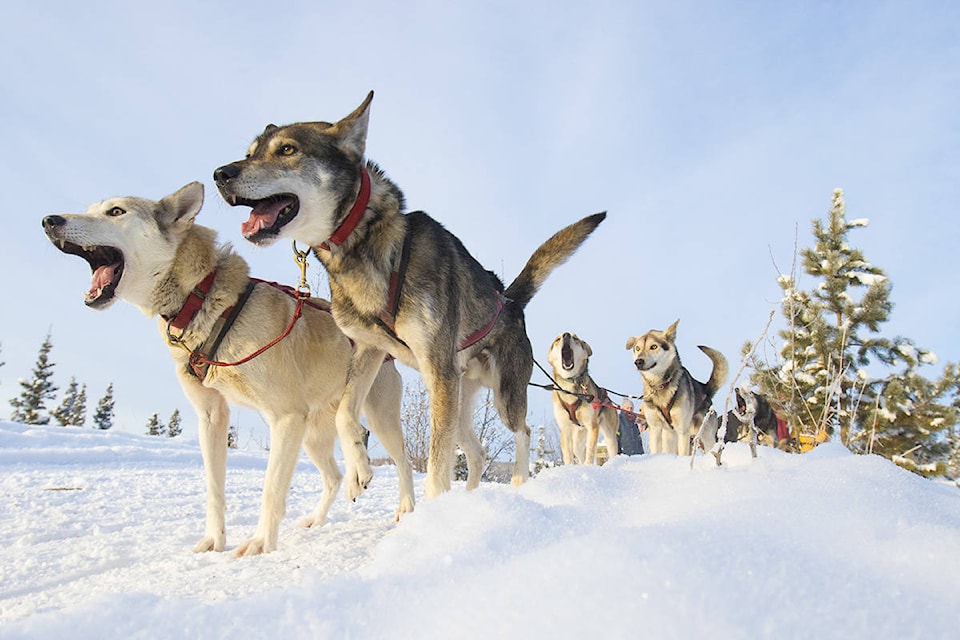Michael Dougherty | Special to the News
More than a billion dogs split into upwards of 500 diverse breeds that share the world with us today.
Robert Losey, a professor of anthropology at the University of Alberta, says the dog, known to scientists as Canis familiaris, has become the most widely dispersed and numerous of terrestrial carnivores. Speaking at a Long Ago Yukon presentation at the Beringia Centre Feb. 17, he explored how the dog evolved.
The exact origins of the dog remain murky. Indisputable, though, is the fact that the dog’s common roots lay in the wolf, Canis lupus. How and when the domesticated dog emerged and also from which of the 37 wolf sub-species it sprung, has challenged scholars for generations.
Losey has extensive archaeological field and laboratory experience in Eastern Siberia and Alaska. He was the recipient of a 2014-2017 Social Sciences and Humanities Research Council of Canada Insight grant for the study of humans and dogs in the North. This work focused on human-animal relations, particularly on the domestication of dogs.
Losey has been exploring prehistoric hunter-gatherer lifeways in northeast Asia as part of the Baikal-Hokkaido Archeology Project (BHAP). It put together an international and multi-disciplinary team composed of scholars with expertise in archaeology, physical anthropology, ethnography, molecular biology, geophysics, geochemistry and environmental reconstructions. Findings from the wide range of disciplines compliment his work on dog domestication at archaeological sites in Ust’-Polui and Ivolgin, Siberia.
This work, as well as his experience in Alaska, has led him to the conclusion that dogs emerged from at least two independent domestication episodes, though dogs today appear to link their origin primarily to a Chinese species of wolf. Deep genetics show, however, traces of another dog springing from European wolf stock. This suggests two early dogs species emerged independently but the Asian dog successfully spread westward and eventually replaced its early European cousin but not before interbreeding with it.
Losey theorizes that domestication occurred gradually as more stress-tolerant wolves found a ready source of food to scavenge from in the early human hunter-gatherer’s waste piles. This food niche brought these animals into close contact with our ancestors well over 15,000 years ago. Slowly, as these adaptable wolves mated with each other, they gradually became isolated from their more skitterish kin.
Losey points to the famous Belyayev fox experiment as a primary source for understanding the domestication process and its impact on the genetics of the dog. Dmitry Belyayev, a Russian geneticist, and his team spent decades beginning in the late 1950s breeding the wild silver foxes from Soviet era fur farms. They selected foxes “for a single behavioral characteristic — allowing only the tamest, least fearful individuals to breed. “This resulted in changes not only in behavior, but also in anatomical and physiological changes that were not directly manipulated,” wrote Jason Goldman in a piece for Scientific American in 2010.
After only 10 generations of selective breeding, traits characteristic of domesticated dogs began to emerge. By the 1980s many of the now “domesticated foxes had floppy ears, short or curly tails, extended reproductive seasons, changes in fur colour and changes in the shape of their skulls, jaws, and teeth,” Goldman writes. “They also lost their ‘musky fox smell.’” The Belyayev experiment shortened into just a handful of decades a process that likely took hundreds or thousands of years of early human and wolf interaction.
Anthropologists like Losey begin to see archaeological evidence of intentional burial of dogs starting 14,700 years ago. This demonstrated how early dogs had become fully integrated into their host human society. Dietary analysis proves they ate whatever their human masters ate. They must have first taken on varied roles we can relate to today such as guard and hunting dogs. Later, on the remote Zhokhov Island in Russia’s Arctic, emerged compelling archaeological evidence that dogs earned their keep by pulling sleds beginning at least 8,000 years ago.
Dog bones have been discovered at archaeological sites on our side of Beringia as far back as 11,000 years ago. Losey said, however, that they only became abundant in the Canadian Arctic about 1,000 years ago. Research findings show that dogs accompanied early peoples migrating south from our Arctic region beginning well over 9,000 years ago. They would spread throughout the Americas.
Losey remains focused on early dogs in the North with a new book, Dogs in the North, Stories of Cooperation and Co-Domestication, due out this spring by Routledge Press. It offers a detailed interdisciplinary study of the multiple roles that dogs have played in the northern circumpolar areas.
Michael Dougherty is a former Yukon Newscolumnist and inveterate walker.
